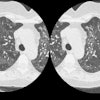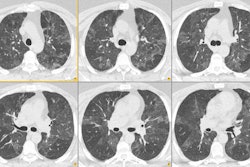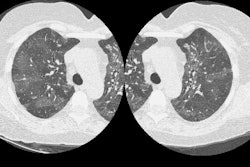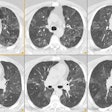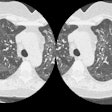Radiology 2000 Oct;217(1):257-61
Solitary pulmonary nodules in patients with extrapulmonary neoplasms.
Quint LE, Park CH, Iannettoni MD
PURPOSE: To determine the frequency of single lung metastasis, primary lung cancer, and
benign lesions in patients with a solitary lung nodule and a primary extrapulmonary
neoplasm. MATERIALS AND METHODS: The authors evaluated the electronic charts of 149
patients with an extrapulmonary malignant neoplasm and a solitary pulmonary nodule. The
histologic characteristics of the nodule were correlated with those of the extrapulmonary
neoplasm and with patient age and smoking history. RESULTS: Patients with carcinomas of
the head and neck, bladder, breast, cervix, bile ducts, esophagus, ovary, prostate, or
stomach were more likely to have primary bronchogenic carcinoma than lung metastasis
(ratio, 25:3 for patients with head and neck cancers; 26:8 for patients with other types
of cancer combined). Patients with carcinomas of the salivary glands, adrenal gland,
colon, parotid gland, kidney, thyroid gland, thymus, or uterus had fairly even odds
(ratio, 13:16). Patients with melanoma, sarcoma, or testicular carcinoma were more likely
to have a solitary metastasis than a bronchogenic carcinoma (ratio, 23:9). Thirty patients
had a benign nodule. There was substantial overlap in age distribution among the patients
with benign disease, lung cancer, and metastasis, although no patient younger than 44
years had a lung cancer. Smokers had a 3.5-fold higher chance of developing lung cancer
compared with nonsmokers. CONCLUSION: The likelihood of a primary lung cancer versus a
metastasis depends on the histologic characteristics of the extrapulmonary neoplasm and
the patient's smoking history.
PMID: 11012454, UI: 20467630


